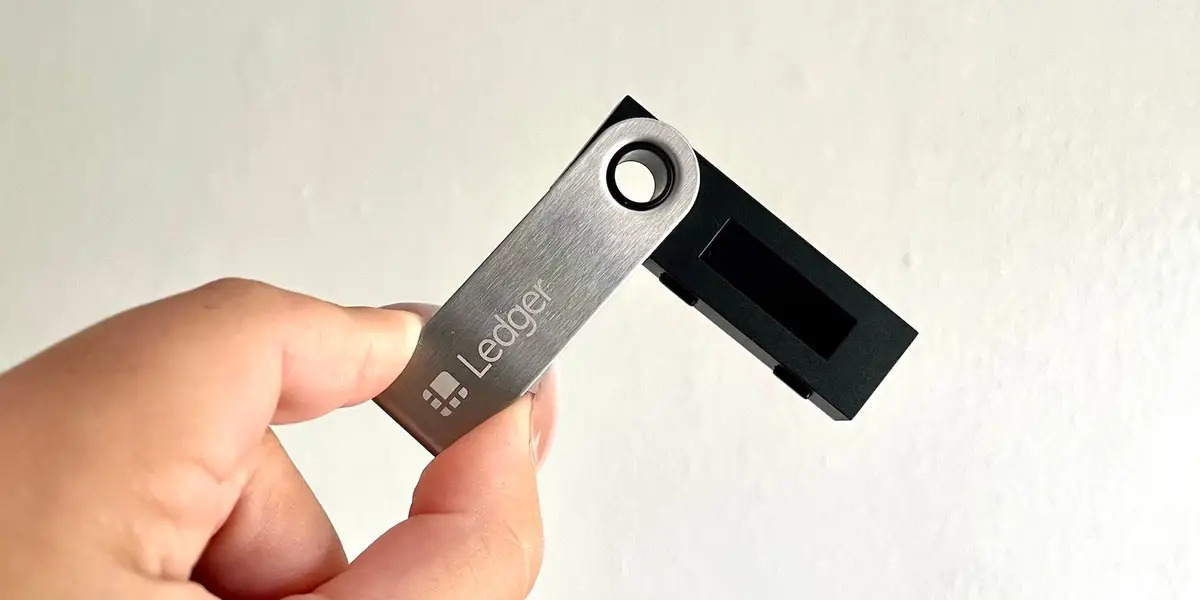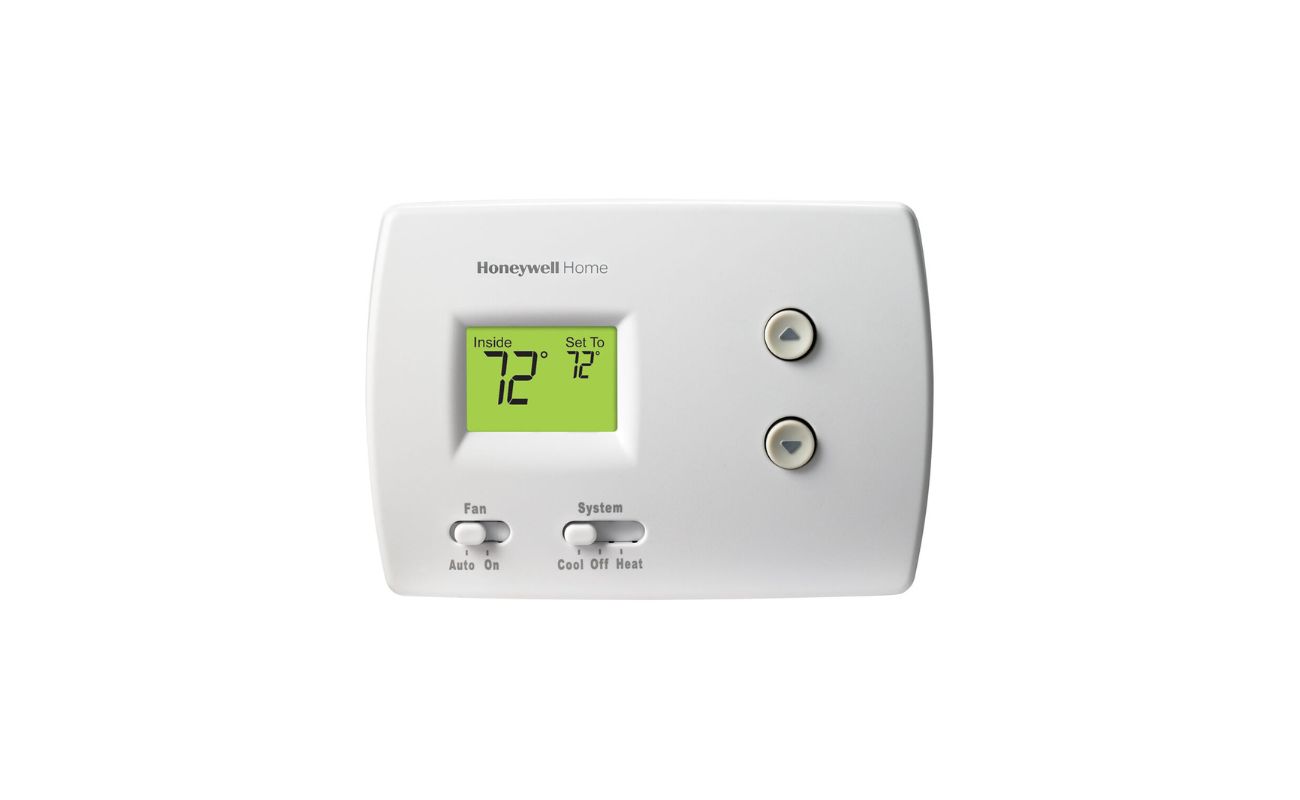

Articles
How To Store Crypto Offline
Modified: March 26, 2024
Learn how to securely store your cryptocurrency offline with our informative articles. Protect your digital assets with our expert tips and advice.
(Many of the links in this article redirect to a specific reviewed product. Your purchase of these products through affiliate links helps to generate commission for Storables.com, at no extra cost. Learn more)
Introduction
Welcome to the world of cryptocurrency, where digital currencies have revolutionized the way we transact and store value. With the rise of cryptocurrencies like Bitcoin, Ethereum, and Litecoin, it has become essential to understand how to securely store your digital assets. While online wallets and exchanges offer convenience, they are also vulnerable to hacks and security breaches. This is where offline storage for cryptocurrency comes into play.
Offline storage, also known as cold storage, refers to the practice of storing your cryptocurrency assets offline, away from the internet and potential online threats. By keeping your digital assets offline, you greatly reduce the risk of unauthorized access and hacking attempts.
In this article, we will explore the different types of offline storage options available for cryptocurrency holders. We will discuss the benefits of offline storage and provide guidance on how to set up and use these storage solutions securely.
Key Takeaways:
- Safeguard your cryptocurrency with offline storage options like paper wallets and hardware wallets. Follow best practices to ensure the security and integrity of your digital assets.
- Choose reputable offline storage solutions and stay informed about the latest security practices to protect your cryptocurrency holdings from potential online threats.
Read more: How To Store Crypto
What is offline storage for cryptocurrency?
Offline storage for cryptocurrency is a method of securely storing your digital assets without any connection to the internet. It involves storing your private keys, which are necessary to access and transfer your cryptocurrencies, in an offline environment.
By keeping your private keys offline, you minimize the risk of them being compromised by hackers or malware. Offline storage ensures that even if your computer or mobile device gets infected, your cryptocurrency remains safe.
Benefits of offline storage
There are several key benefits to storing your cryptocurrency offline:
- Enhanced security: Offline storage significantly reduces the risk of cyber attacks, as your private keys are not exposed to online threats.
- Protection against hacking: Storing your cryptocurrency offline greatly reduces the chances of hackers gaining access to your digital assets.
- Protection against malware: Offline storage prevents malware from infecting your device and gaining access to your private keys.
- Control over your assets: When you store your cryptocurrencies offline, you have full control and ownership of your assets, without relying on third-party exchanges.
- Long-term storage: Offline storage is ideal for long-term holding of cryptocurrencies, as it provides a secure and reliable way to preserve your assets.
Now that we understand the benefits of offline storage, let’s explore the different types of offline storage options available for cryptocurrency holders.
Key Takeaways:
- Safeguard your cryptocurrency with offline storage options like paper wallets and hardware wallets. Follow best practices to ensure the security and integrity of your digital assets.
- Choose reputable offline storage solutions and stay informed about the latest security practices to protect your cryptocurrency holdings from potential online threats.
Read more: How To Store Crypto
What is offline storage for cryptocurrency?
In the world of cryptocurrency, offline storage refers to the practice of securely storing your digital assets offline, away from the internet and potential online threats. It involves keeping your private keys, which are necessary to access and transfer your cryptocurrencies, in an offline environment.
Private keys are typically generated through cryptographic algorithms and serve as a digital signature that proves ownership of the associated cryptocurrency. They are crucial for authorizing transactions and are used to sign and verify the validity of digital transactions.
By storing your private keys offline, you greatly reduce the risk of unauthorized access and hacking attempts. Offline storage ensures that even if your computer or mobile device gets infected with malware, your cryptocurrency remains safe and secure.
There are various types of offline storage solutions available for cryptocurrency holders. These include physical storage options and software-based storage options.
Physical storage options
Physical storage options involve storing your private keys in a physical form, such as on a piece of paper or a specialized hardware device.
Paper wallets
A paper wallet is a form of cold storage that involves generating and printing your private keys onto a physical piece of paper. This paper contains both the private key, which allows you to access and transfer your cryptocurrency, and a corresponding public key, which others can use to send funds to your wallet.
To create a paper wallet, you can use specialized websites or software that generate a pair of private and public keys. Once generated, you can print the paper wallet and securely store it in a safe place, away from prying eyes and potential physical threats like fire or water damage.
Hardware wallets
Hardware wallets are physical devices specifically designed for securely storing private keys offline. These devices resemble USB flash drives and provide a dedicated environment for generating and storing keys.
When using a hardware wallet, the private keys never leave the device and are stored within a secure element. The device helps to protect against potential malware on the computer or mobile device you’re using to transact. Hardware wallets also often come with additional security features such as built-in screens and buttons to verify transactions.
Read more: How To Store Ethereum Offline
Software-based storage options
Software-based storage options involve using software applications or devices that allow you to store your private keys offline.
Cold wallets
Cold wallets are software applications that generate and store private keys on an offline device, such as a computer that is not connected to the internet. They are typically used for long-term storage, where the intention is to hold the cryptocurrency rather than actively transact with it.
Creating a cold wallet involves downloading and installing the software on an offline computer. The private keys are then generated within the application, and the wallet file is encrypted and transferred to a USB drive or other storage device for safekeeping.
Air-gapped computers
An air-gapped computer is a device that is completely isolated from any network or internet connection. These computers are used for high-security situations and are typically employed by advanced users or organizations with significant cryptocurrency holdings.
An air-gapped computer is used to generate and sign transactions offline. The signed transaction data is then transferred to a separate online computer, connected to the internet, for broadcasting to the blockchain network.
Offline storage options for cryptocurrency provide enhanced security and protection for your digital assets. Whether you choose a physical storage option like a paper wallet or a hardware wallet, or a software-based option like a cold wallet or an air-gapped computer, offline storage gives you control over your assets and peace of mind.
Benefits of offline storage
Offline storage for cryptocurrency offers numerous benefits that make it a preferred choice for safeguarding digital assets. Let’s explore the advantages of utilizing offline storage options:
- Enhanced security: Offline storage significantly reduces the risk of cyber attacks. Since your private keys are kept offline, away from the internet, they are inaccessible to hackers or any online threats. This provides an added layer of security to protect your digital assets.
- Protection against hacking: Storing your cryptocurrency offline greatly reduces the chances of hackers gaining access to your private keys. Unlike online wallets or exchanges, which can be vulnerable to hacking attempts, offline storage keeps your assets safe from unauthorized access.
- Protection against malware: Offline storage prevents malware from infecting your device and gaining access to your private keys. Malware can pose a significant threat to online wallets, as it can capture your keystrokes or gain unauthorized control over your device. By keeping your private keys offline, you eliminate this risk entirely.
- Control over your assets: When you store your cryptocurrencies offline, you have full control and ownership of your assets. You are not dependent on third-party exchanges or custodial services, which may have certain limitations or security vulnerabilities. Offline storage empowers you to be in complete control of your digital assets.
- Long-term storage: Offline storage is ideal for long-term holding of cryptocurrencies. By keeping your private keys offline, you can securely store your assets for an extended period without any concerns about online vulnerabilities or the need for constant monitoring.
Offline storage options provide a reliable and secure method for preserving your digital assets. Whether you choose a physical storage option like paper wallets or hardware wallets, or software-based solutions like cold wallets or air-gapped computers, offline storage offers peace of mind and protection for your cryptocurrency holdings.
It is important to note that while offline storage is highly secure, it is still essential to follow best practices for securing your offline storage solutions. This includes ensuring the physical security of your storage devices and regularly updating and backing up your offline wallets to prevent any potential loss of access to your digital assets.
With the benefits of offline storage, you can confidently protect and manage your cryptocurrency assets. By choosing offline storage options that suit your needs and preferences, you can enjoy peace of mind knowing that your digital assets are safe from online threats and vulnerabilities.
Types of offline storage options
There are various types of offline storage options available for securely storing your cryptocurrency assets. These options can be broadly categorized into physical storage options and software-based storage options. Let’s explore each category:
Physical storage options
Physical storage options involve storing your private keys in a physical form, such as on a piece of paper or a specialized hardware device.
Paper wallets
A paper wallet is a form of cold storage that involves generating and printing your private keys onto a physical piece of paper. This paper contains both the private key, which allows you to access and transfer your cryptocurrency, and a corresponding public key, which others can use to send funds to your wallet.
To create a paper wallet, you can use specialized websites or software that generate a pair of private and public keys. Once generated, you can print the paper wallet and securely store it in a safe place, away from prying eyes and potential physical threats like fire or water damage. Paper wallets provide an easy and cost-effective method of offline storage.
Hardware wallets
Hardware wallets are dedicated physical devices designed specifically for securely storing private keys. These devices resemble USB flash drives and provide a dedicated environment for generating and storing keys.
When using a hardware wallet, the private keys never leave the device and are stored within a secure element. The devices are highly resistant to hacking attempts, even when connected to potentially compromised computers. Hardware wallets often come with additional security features such as built-in screens and buttons to verify transactions, adding an extra layer of protection to your cryptocurrency holdings.
Read more: How To Store Ethereum Offline
Software-based storage options
Software-based storage options involve using software applications or devices that allow you to store your private keys offline.
Cold wallets
Cold wallets are software applications that generate and store private keys on an offline device, such as a computer that is not connected to the internet. Cold wallets are generally used for long-term storage, where the intention is to hold the cryptocurrency rather than actively transact with it.
Creating a cold wallet involves downloading and installing the software on an offline computer. The private keys are then generated within the application, and the wallet file is encrypted and transferred to a USB drive or other storage device for safekeeping. Cold wallets provide a convenient way to securely store your digital assets offline while still having the ability to access and manage them when needed.
Air-gapped computers
An air-gapped computer is a device that is completely isolated from any network or internet connection. These computers are used for high-security situations and are typically employed by advanced users or organizations with significant cryptocurrency holdings.
An air-gapped computer is used to generate and sign transactions offline. The signed transaction data is then transferred to a separate online computer, connected to the internet, for broadcasting to the blockchain network. This setup ensures that the private key is never exposed to any online vulnerabilities.
By utilizing physical storage options like paper wallets and hardware wallets, or software-based options like cold wallets and air-gapped computers, you can securely store your cryptocurrency offline. It is important to choose an offline storage option that aligns with your security needs and level of technical expertise.
In the next sections, we will explore the step-by-step process of creating and using paper wallets, hardware wallets, cold wallets, and air-gapped computers for offline storage of cryptocurrency.
Physical storage options
Physical storage options for offline storage of cryptocurrency involve storing your private keys in a physical form. This provides an additional layer of security by keeping your digital assets offline and away from potential online threats. Two popular physical storage options are paper wallets and hardware wallets.
Paper wallets
A paper wallet is a simple and cost-effective method of offline storage. It involves generating and printing your private keys onto a physical piece of paper. A paper wallet typically includes the private key, which allows you to access and transfer your cryptocurrency, and a corresponding public key, which others can use to send funds to your wallet.
To create a paper wallet, you can use specialized websites or software that generate a pair of private and public keys for your cryptocurrency address. Once generated, you can print the paper wallet, which will include a QR code representation of the keys, as well as the alphanumeric representation for manual input.
It is crucial to generate the paper wallet on a trusted and secure device, such as an air-gapped computer or a clean operating system. This minimizes the risk of your private key being compromised during the generation process.
After printing the paper wallet, it is essential to take precautions to ensure the security of the physical copy. Store it in a safe and secure location, such as a safe deposit box or a secure home safe. Protect the paper wallet from fire, water damage, and potential theft or unauthorized access.
Hardware wallets
Hardware wallets are dedicated physical devices designed specifically for offline storage of cryptocurrency. They provide a secure environment for generating and storing private keys, protecting them from potential online threats.
When using a hardware wallet, your private keys are stored within the device itself, which is equipped with robust security measures. The keys never leave the hardware wallet, even when connecting it to a potentially compromised computer or other devices.
To use a hardware wallet, you typically connect it to your computer or mobile device via USB or Bluetooth. The hardware wallet often includes a small screen and buttons, allowing you to navigate the device’s interface and verify transactions directly on the device.
When setting up a hardware wallet, you will typically follow a step-by-step process provided by the manufacturer. This usually involves initializing the device, creating a secure PIN code, and backing up the recovery seed, which is a series of randomly-generated words used to restore access to your funds in case the device is lost or damaged.
Using a hardware wallet is straightforward. When you want to make a transaction, you connect the device to your computer, open the wallet application on your computer, and authorize the transaction on the hardware wallet itself. This ensures that your private keys remain secure and isolated from potential online threats during the transaction process.
Hardware wallets offer an excellent combination of security and convenience. However, it is essential to purchase hardware wallets directly from reputable sources to avoid any risks of tampering or compromised devices.
By utilizing physical storage options like paper wallets or hardware wallets, you can securely store your cryptocurrency offline. These options provide an additional layer of protection against online threats, ensuring the safety of your digital assets.
Read more: How To Store Cryptocurrency Offline
Software-based storage options
Software-based storage options for offline storage of cryptocurrency involve using software applications or devices to securely store your private keys offline. These options provide convenience and security, allowing you to manage and access your digital assets without being connected to the internet. Two popular software-based storage options are cold wallets and air-gapped computers.
Cold wallets
Cold wallets, also known as cold storage or offline wallets, are software applications designed for generating and storing private keys on an offline device. They are typically used for long-term storage of cryptocurrency, where the intention is to hold the assets rather than actively transact with them.
Setting up a cold wallet involves downloading and installing the software on an offline computer. The cold wallet application generates the private keys within the secure environment of the offline device, ensuring that the keys remain protected from potential online threats.
Once the private keys are generated, the cold wallet software usually provides options for encrypting and exporting the wallet data. This data is then transferred to a USB drive or other storage device, which can be physically stored in a secure location. It is recommended to make multiple copies of the encrypted wallet data and store them in separate secure locations for redundancy.
To access and manage your cryptocurrency using a cold wallet, you will need to import the wallet data into a compatible wallet application on a connected device. This process should be done in a secure and trusted environment to prevent any potential compromise of the private keys.
Air-gapped computers
An air-gapped computer is a device that is completely isolated from any network or internet connection. These computers are employed in high-security situations and are commonly used for offline management and storage of cryptocurrency assets.
Using an air-gapped computer for offline storage involves generating and signing transactions offline. The private keys are stored on the air-gapped computer and never come in contact with the internet or any online vulnerabilities.
When making a transaction, you create the transaction file on the air-gapped computer and then transfer it to a separate online device using a secure method, such as a USB drive. This online device, which is connected to the internet, is used to broadcast the signed transaction to the blockchain network.
By keeping the private keys and transaction signing process offline, an air-gapped computer provides a highly secure method of managing and transacting with cryptocurrencies.
Software-based storage options like cold wallets and air-gapped computers offer convenience and security for offline storage of cryptocurrency. Whether you choose a cold wallet for long-term storage or an air-gapped computer for advanced offline management, these options give you control over your digital assets while keeping them protected from potential online threats.
How to create a paper wallet
Creating a paper wallet is a simple and secure method of offline storage for your cryptocurrency. It involves generating and printing your private and public keys onto a physical piece of paper. Here’s a step-by-step guide on how to create a paper wallet:
Read more: How To Store Crypto In Cold Storage
Generating private and public keys
- Start by selecting a reputable paper wallet generator. There are various online platforms and software applications available for generating paper wallets. Make sure to choose one with a good reputation and positive user reviews.
- Disconnect your computer or device from the internet for added security.
- Open the paper wallet generator and follow the instructions provided. The generator will typically guide you through the process of generating a pair of private and public keys for your cryptocurrency address.
- The generator will use cryptographic algorithms to generate a random and unique set of keys. This ensures the security and unpredictability of your keys.
- Once the keys are generated, the paper wallet generator may provide options for additional security measures, such as password encryption or BIP38 encryption. You can choose to enable these features if desired.
Printing and securely storing the paper wallet
- After generating the keys, you will have the option to print the paper wallet. Use a printer that is connected to an offline computer to ensure that the keys are not exposed to potential online threats.
- Make sure to print the paper wallet on a clean sheet of paper and avoid using a public or shared printer. This minimizes the risk of someone else gaining access to your keys.
- Once printed, double-check that the entire paper wallet, including the keys and QR codes, is clearly visible and not cut off or distorted.
- Before storing the paper wallet, it is crucial to ensure its physical security. Keep the paper wallet in a secure location, such as a safe deposit box or a home safe, away from potential dangers like fire, water damage, or theft.
- Consider making multiple copies of the paper wallet and storing them in separate secure locations as a backup. This will protect you in case the original paper wallet gets lost or damaged.
- Remember to keep the paper wallet private and avoid sharing it with anyone. The security of your cryptocurrency holdings relies on keeping the private key confidential.
By following these steps, you can create a paper wallet for offline storage of your cryptocurrency. A paper wallet provides an accessible, cost-effective, and secure method of storing your digital assets offline, away from potential online threats.
How to use a hardware wallet
A hardware wallet is a secure and convenient way to store your cryptocurrency offline. It provides an extra layer of protection for your private keys, keeping them secure from potential online threats. Here’s a step-by-step guide on how to use a hardware wallet:
Setting up the hardware wallet
- Choose a reputable hardware wallet that supports the cryptocurrencies you own. Some popular options include Ledger, Trezor, and KeepKey. Purchase the hardware wallet from an official source to ensure its authenticity.
- Upon receiving your hardware wallet, check for any tampering or signs of physical damage. Ensure that the package is sealed and the firmware of the wallet is up to date.
- Connect your hardware wallet to a trusted computer or mobile device using the provided USB cable or Bluetooth connection.
- Follow the instructions provided by the hardware wallet manufacturer. This may involve installing specific software applications or browser extensions to interact with the device.
- During the setup process, you will be prompted to choose a PIN code for the hardware wallet. Select a unique and strong PIN and make sure to remember it. Do not share your PIN with anyone.
- After setting up the PIN code, the hardware wallet will generate a recovery seed. This is a randomly-generated series of words used to restore access to your funds if the wallet is lost or damaged. Write down the recovery seed and store it in a safe and secure location, ideally offline or in a separate physical location.
Read more: How To Store Crypto On Ledger Nano X
Transferring and storing cryptocurrency
- To receive cryptocurrency to your hardware wallet, open the associated wallet software or application on your computer or mobile device. Each hardware wallet will come with its own software or compatible applications.
- Within the wallet software, locate and copy your unique receiving address, also known as the public key. This is the address where you will send your cryptocurrency from an exchange or another wallet.
- Initiate the transfer from your exchange or other wallet, providing the receiving address from your hardware wallet as the destination. Confirm the transaction details and wait for the funds to arrive in your hardware wallet.
- To send cryptocurrency from your hardware wallet, open the wallet software or application and select the option to send funds.
- Enter the recipient’s address and the amount you wish to send. Confirm the transaction details on the device’s screen and follow any additional prompts or verification steps.
- Review all transaction details on the hardware wallet’s screen before confirming the transaction. Once confirmed, the transaction will be signed using the private key stored securely within the hardware wallet.
- Keep your hardware wallet disconnected from the internet when it is not in use. This ensures that your private keys remain isolated from potential online threats.
By following these steps, you can securely store and manage your cryptocurrency using a hardware wallet. Always refer to the specific instructions provided by the hardware wallet manufacturer for any device-specific features or details.
How to set up a cold wallet
A cold wallet is a software-based solution for offline storage of cryptocurrency. It allows you to securely generate and store private keys on an offline device for long-term storage. Here’s a step-by-step guide on how to set up a cold wallet:
Installing a cold wallet software
- Select a reputable cold wallet software that supports the cryptocurrencies you own. Popular options include Electrum, Bitcoin Core, and Exodus.
- Choose a dedicated offline computer that will be used solely for cold storage. This computer should never be connected to the internet to minimize the risk of online threats.
- Download the cold wallet software from the official website onto the offline computer.
- Transfer the installation file to the offline computer using a secure method, such as a USB drive or external storage device. Be cautious not to use the internet-connected computer or a potentially compromised storage device.
- Install the cold wallet software on the offline computer following the provided instructions. Make sure to select an offline installation option to prevent the software from attempting to connect to the internet during the installation process.
Creating and managing cold storage
- Launch the cold wallet software on the offline computer and follow the on-screen prompts to create a new wallet.
- The software will guide you through the process of generating a new seed phrase. This seed phrase is a randomly generated series of words that serves as a backup to restore access to your funds in case of a device failure or loss.
- Write down the seed phrase on a piece of paper and store it securely in multiple physically separate locations. Keep it safe from damage and unauthorized access.
- Set a strong password for the cold wallet software. This password adds an extra layer of encryption to your wallet and prevents unauthorized access to your funds.
- After setting up the cold wallet, you can generate unique receiving addresses for each of your cryptocurrencies. These addresses can be shared with others to receive funds into your cold storage.
- When you need to send cryptocurrency from your cold wallet, generate a new transaction on the offline computer. Transfer the transaction file to an online device or use a QR code for scanning by a mobile device.
- Sign the transaction with your private key on the offline computer and confirm the transaction details.
- Transfer the signed transaction to an online device using a secure method. Broadcast the transaction to the blockchain network through an online wallet or a blockchain explorer.
By following these steps, you can set up and use a cold wallet for secure offline storage of your cryptocurrency. Always remember to keep your cold wallet computer offline and regularly make backups of your seed phrase and wallet data to avoid any potential loss of access to your funds.
Read more: How To Store Bitcoin Offline
How to use an air-gapped computer
An air-gapped computer provides a highly secure environment for offline management and storage of cryptocurrency. It allows you to generate and sign transactions offline, ensuring the safety of your private keys. Here’s a step-by-step guide on how to use an air-gapped computer:
Setting up an air-gapped computer
- Start by selecting a dedicated computer that will be used exclusively for air-gapped cryptocurrency activities. This computer should never be connected to the internet to minimize the risk of online threats.
- Ensure that the computer has the necessary operating system and software required for cryptocurrency management. It is recommended to use a clean and secure operating system like Linux.
- Disconnect the computer from any network connections, including Wi-Fi, Ethernet, and Bluetooth.
- Install any required cryptocurrency wallet software or applications on the air-gapped computer. These software applications should be obtained from reputable sources and transferred to the computer using a secure method like a USB drive.
- Double-check that no communication ports or devices on the air-gapped computer can be used to establish a network connection.
- Set up any necessary security measures on the air-gapped computer, such as encryption and strong passwords, to protect your offline activities.
Transferring and managing cryptocurrency offline
- To receive cryptocurrency to your air-gapped computer, generate a new receiving address within the wallet software on the offline computer. This address can be shared with others for funds to be sent to your offline wallet.
- When you need to make a transaction, create the transaction on the air-gapped computer using the wallet software. This includes specifying the recipient’s address and the amount to send.
- After creating the transaction, the wallet software will generate a transaction file or QR code representing the transaction details.
- Transfer the transaction file or scan the QR code using a secure method, such as a USB drive or a dedicated QR code scanner, to move the transaction details to an online device connected to the internet.
- On the online device, use a compatible wallet software or a blockchain explorer to broadcast the signed transaction to the blockchain network.
- Monitor the transaction status and confirm that it has been successfully included in the blockchain network.
- Regularly back up the wallet software and private keys on the air-gapped computer to ensure you have a secure copy of your offline wallet data.
By following these steps, you can securely manage and store your cryptocurrency using an air-gapped computer. Remember to keep the air-gapped computer physically secure and regularly update any software or security measures to maintain a high level of protection for your digital assets.
Best practices for offline storage
When it comes to offline storage of cryptocurrency, following best practices is crucial to ensure the security and integrity of your digital assets. Here are some important guidelines to keep in mind:
Read more: How To Fix Printer That Is Offline
1. Use reputable offline storage solutions:
Choose offline storage options from trusted and reputable sources. Research and select hardware wallets, paper wallets, or cold wallet software with a solid reputation and positive reviews in the cryptocurrency community.
2. Ensure offline device security:
If you are using an offline device such as a computer or hardware wallet, keep it physically secure. Store it in a safe location, away from potential theft, loss, or damage. Regularly update software and firmware to patch any security vulnerabilities.
3. Backup your wallet data:
Regularly create backups of your offline wallet data, including private keys, recovery seeds, and any associated passwords or PINs. Store these backups in different secure locations, such as a safe deposit box or a fireproof safe, to protect against loss or damage.
4. Use antivirus and malware protection:
Even though you are using offline storage, it is still essential to keep your online devices secure. Install and update reliable antivirus and anti-malware software on any devices connected to the internet to protect against potential online threats.
Read more: Why Is My Printer Offline Mac
5. Double-check addresses before transactions:
When using offline storage to receive or send cryptocurrency, double-check the addresses manually to avoid any mistakes. Crypto transactions can be irreversible, and sending funds to the wrong address can result in permanent loss.
6. Test your backup and recovery process:
Before relying on offline storage for significant holdings, test your backup and recovery process. Ensure you can successfully restore your offline wallet using the backup files or recovery seed you have created. This will give you confidence in your ability to access your funds if needed.
7. Stay informed and educate yourself:
Keep up-to-date with the latest security practices and developments in cryptocurrency. Stay informed about potential risks and vulnerabilities. Consider following trusted sources and forums to expand your knowledge and learn from the experiences of others.
By following these best practices, you can enhance the security of your offline storage and protect your cryptocurrency holdings from potential threats. Remember to maintain a proactive approach to security and regularly assess and update your offline storage practices as needed.
Conclusion
Offline storage is a vital component of safely managing and securing your cryptocurrency. By leveraging offline storage options, such as paper wallets, hardware wallets, cold wallets, or air-gapped computers, you can mitigate the risk of online threats and protect your digital assets from hackers, malware, and unauthorized access.
Physical storage options like paper wallets and hardware wallets provide a simple and cost-effective way to store your private keys offline. By generating and printing your keys onto a physical piece of paper or using a dedicated hardware device, you can keep your cryptocurrency safe from potential online vulnerabilities.
Software-based storage options, such as cold wallets and air-gapped computers, offer more sophisticated offline storage solutions. These options provide a secure environment for generating and managing private keys offline. Cold wallets are ideal for long-term storage needs, while air-gapped computers are suitable for advanced users or organizations with higher security requirements.
Regardless of the offline storage option you choose, it is crucial to follow best practices. Use reputable solutions, secure your offline devices, regularly backup your wallet data, and stay informed about the latest security practices and developments in cryptocurrency. By doing so, you can further strengthen the security of your offline storage and protect your digital assets.
Offline storage for cryptocurrency provides peace of mind and control over your funds. It enables you to hold and manage your cryptocurrency offline, away from the risks associated with online wallets and exchanges. By incorporating the best practices outlined in this article, you can confidently navigate the world of cryptocurrency and protect your investments for the long term.
Frequently Asked Questions about How To Store Crypto Offline
Was this page helpful?
At Storables.com, we guarantee accurate and reliable information. Our content, validated by Expert Board Contributors, is crafted following stringent Editorial Policies. We're committed to providing you with well-researched, expert-backed insights for all your informational needs.








0 thoughts on “How To Store Crypto Offline”